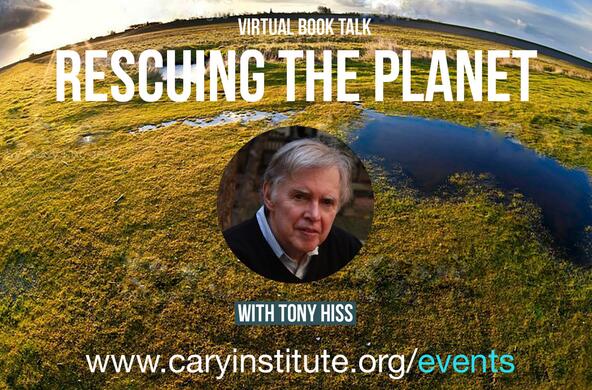Do biodiversity losses aggravate transmission of infectious diseases spread by animals to humans? The jury is still out but several scientists say there is a “biodiversity dilution effect” in which declining biodiversity results in increased infectious-disease transmission.
The rationale is that greater host diversity in a biodiversity-rich region provides a range of hosts, many incompetent, for the pathogen. The presence of a range of hosts and incompetent reservoir hosts “dilutes” the risk of exposure to zoonotic infections spread by animals and the transmission chain to humans, say scientists.
Among those who see clear links between biodiversity losses and increased risk of transmission is Rajan Patil, associate professor of epidemiology at SRM University, Chennai who says that “biodiversity has a great influence on magnitude and impact of epidemics.”
“Biodiversity has a great influence on magnitude and impact of epidemics.”
Scientists have observed a clear link between the decrease in disease frequency with increase in host diversity, says Patil, citing examples of West Nile Disease and Lyme Disease whose incidence has been linked to the biodiversity dilution effect.
In a 2018 report in the Indian Journal of Community Medicine, Patil’s group attributed an outbreak of anthrax in Chhattisgarh state to the loss of biodiversity.
Patil says that biodiversity and human health are interconnected because man is part of ecological systems comprising diverse flora and fauna. Any human action that alters the ecological balance and puts some species at risk of extinction can directly impact human health, he says.
Patil and colleagues had earlier explained in the Annals of Tropical Medicine and Public Health that biodiversity can be described in terms of “species richness” which represents the diversity or different types of species, and “species evenness” which represents the proportional representation of each of these species, explains Patil. In the case of disease transmission dynamics, species evenness is important as it indicates the total distribution of vectors available for a pathogen to feed on, he says.
In the case of Lyme disease which is transmitted by ticks from white-footed mice to humans, a species-poor region with few other alternative hosts other than white-footed mice results in greater contact between tick and white-footed mouse.
The West Nile Virus is a mosquito-borne disease in which the primary reservoir is wild “passerine” birds or perching birds that comprise half of the total bird species. When alternate hosts including non-passerine birds, crows, horses and even crocodiles are available for the mosquitoes, the vector gets less infected, leading to fewer transmissions among humans, he says..
Richard Ostfeld, a disease ecologist at the non-profit Cary Institute of Ecosystem Studies, New York, says his team’s research shows a “consistent, general pattern that loss of biodiversity is associated with increases in transmission of infectious diseases.”
This relationship occurs not only for human diseases, but also for diseases of wildlife, livestock, and plants, Ostfeld says. “It is not found in every disease system, but it is found in most and is often quite strong.” Several meta-analyses (analyses of all available published analyses) show “without question that this link is strong and widespread.”
Ostfeld says that infections are more likely spread by reservoir host species with a “typically weedy lifestyle—they tend to live fast and die young, reach sexual maturity at a young age, have many babies per brood and many broods per year, and then die at a young age. These weedy hosts eat a lot of things and occupy lots of habitats. “And these weedy species are the ones that best transmit infections to other species, including humans.”
When humans disrupt or destroy natural ecosystems, some species are lost, but unfortunately not the weedy ones that “often thrive in these human-impacted systems with reduced biodiversity,” explains Ostfeld.
The biodiversity dilution debate
While scientists such as Ostfeld and Patil are convinced about the biodiversity dilution effect, some others say the issue is still unresolved.
Some links have been established, but there is no clear generalisable mechanistic understanding, says Abi Tamin Vanak, associate professor at the centre for biodiversity and conservation at the Ashoka Trust for Research in Ecology & the Environment (ATREE), Bangalore. “One cannot always predict how the loss of biodiversity will lead to the emergence of a new pathogen or the increased spread of an existing one.”
“In some cases, it may be a direct link, such as butchering and consuming wild meat that may harbour potentially deadly pathogens,” which is suspected to have happened in the case of Ebola, explains Vanak’s colleague Mridula Paul.
Or it may be more indirect, such as the changing rates of exposure to vector-borne diseases, such as the Kyasanur Forest Disease (KFD), a tick-borne haemorrhagic fever endemic to southern India and is linked to land-use change.
The biodiversity dilution effect is the subject of ongoing research, “and there is some back and forth amongst scientists,” says Vanak.
For example, in a meta-analysis published in 2015 in the Proceedings of the National Academy of Sciences (PNAS) of the United States, David Civitello from the University of South Florida, Tampa, and co-authors found broad support for the biodiversity dilution effect.
Others such as Chelsea Wood and colleagues from the University of Washington have refuted the evidence for this, saying that researchers have generally only looked at some part of the spectrum of biodiversity loss to draw broad conclusions, he says.
A team led by Thomas Gillespie, associate professor at the department of environmental sciences, Emory University, has developed a multi-host model to explore how the pathogen transmission dynamics change with changes in biodiversity driven by habitat loss.
Their model helped demonstrate definitively that “a universal dilution effect does not exist. Our work showed that declining habitat, and thus declining biodiversity, can lead to either increasing or decreasing infectious-disease risk, measured as endemic prevalence,” Gillespie says.
His group found that the outcome depends upon the pathogen transmission mode and how host competence scales with body size, he says. “We also found that dilution effects occurred for most frequency-transmitted pathogens and amplification effects occurred for density-dependent pathogens.”
“I’m not sure that this debate has been settled yet,” says Paul.
Rather than drawing broad conclusions based on the little that we do know at this point, it would be prudent for us to invest in research to better understand the patterns and processes that make us vulnerable to the threat of zoonoses, said Vanak.
We must also consider that although valid in some circumstances, we cannot be wholly dependent on the results of research generated in other countries. India is unique in several ways, and therefore we do need to better understand our own risk factors (with all their political, economic and socio-ecological underpinnings), Vanak adds.
But others such as Ostfeld are confident about the theory. “The reverse, meaning that disease risk could go up with increasing biodiversity, can happen in theory,” Ostfeld. “But it rarely happens in reality.”
Ostfeld clarifies that while it is true that the overall diversity of parasites is higher in more diverse communities of animal hosts, the great majority of these parasites do not pose a large risk of spillover. “It’s the parasites and pathogens in the rodents, bats, and some other small mammals that are much more likely to cause problems in humans.”
“The species that tend to be most sensitive to human disruption of ecosystems are rarely the ones most responsible for spillover transmission to humans,” he points out. “In other words, we can be confident that the next zoonotic emergence event is more likely to come from a rat than a rhino.”





